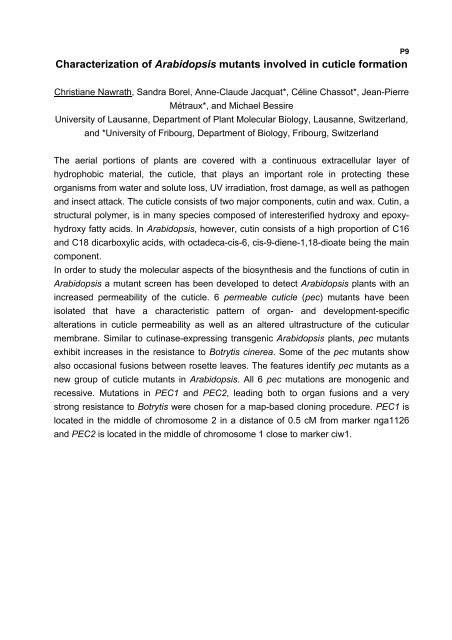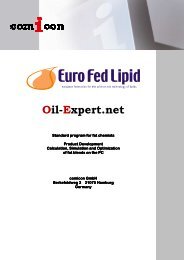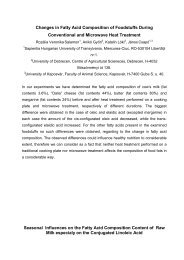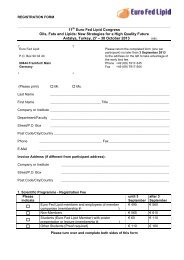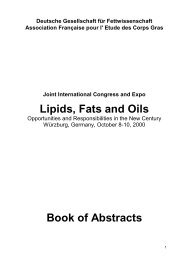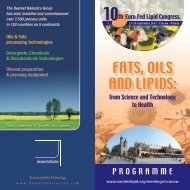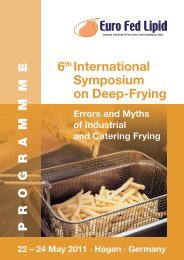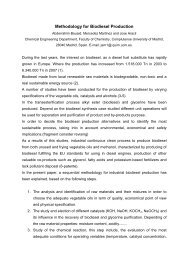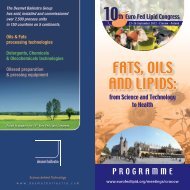Abstracts now available online - Euro Fed Lipid
Abstracts now available online - Euro Fed Lipid
Abstracts now available online - Euro Fed Lipid
Create successful ePaper yourself
Turn your PDF publications into a flip-book with our unique Google optimized e-Paper software.
P9<br />
Characterization of Arabidopsis mutants involved in cuticle formation<br />
Christiane Nawrath, Sandra Borel, Anne-Claude Jacquat*, Céline Chassot*, Jean-Pierre<br />
Métraux*, and Michael Bessire<br />
University of Lausanne, Department of Plant Molecular Biology, Lausanne, Switzerland,<br />
and *University of Fribourg, Department of Biology, Fribourg, Switzerland<br />
The aerial portions of plants are covered with a continuous extracellular layer of<br />
hydrophobic material, the cuticle, that plays an important role in protecting these<br />
organisms from water and solute loss, UV irradiation, frost damage, as well as pathogen<br />
and insect attack. The cuticle consists of two major components, cutin and wax. Cutin, a<br />
structural polymer, is in many species composed of interesterified hydroxy and epoxyhydroxy<br />
fatty acids. In Arabidopsis, however, cutin consists of a high proportion of C16<br />
and C18 dicarboxylic acids, with octadeca-cis-6, cis-9-diene-1,18-dioate being the main<br />
component.<br />
In order to study the molecular aspects of the biosynthesis and the functions of cutin in<br />
Arabidopsis a mutant screen has been developed to detect Arabidopsis plants with an<br />
increased permeability of the cuticle. 6 permeable cuticle (pec) mutants have been<br />
isolated that have a characteristic pattern of organ- and development-specific<br />
alterations in cuticle permeability as well as an altered ultrastructure of the cuticular<br />
membrane. Similar to cutinase-expressing transgenic Arabidopsis plants, pec mutants<br />
exhibit increases in the resistance to Botrytis cinerea. Some of the pec mutants show<br />
also occasional fusions between rosette leaves. The features identify pec mutants as a<br />
new group of cuticle mutants in Arabidopsis. All 6 pec mutations are monogenic and<br />
recessive. Mutations in PEC1 and PEC2, leading both to organ fusions and a very<br />
strong resistance to Botrytis were chosen for a map-based cloning procedure. PEC1 is<br />
located in the middle of chromosome 2 in a distance of 0.5 cM from marker nga1126<br />
and PEC2 is located in the middle of chromosome 1 close to marker ciw1.


